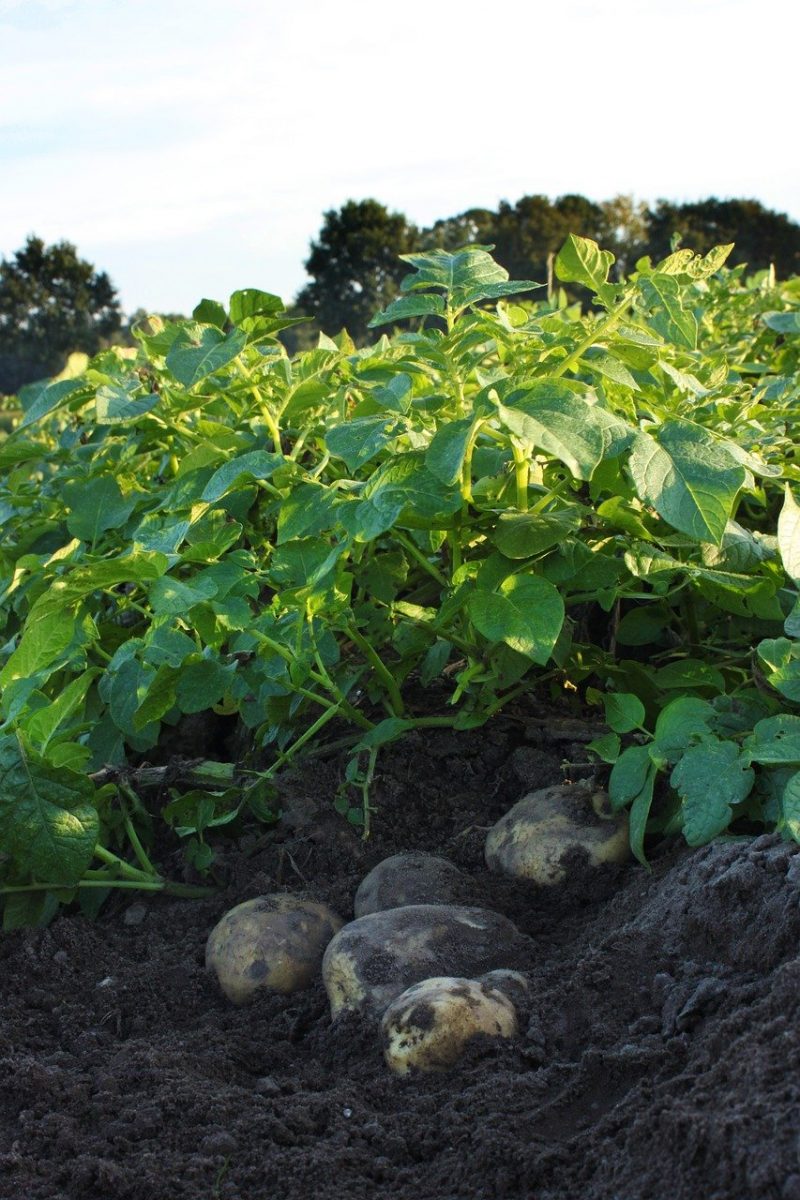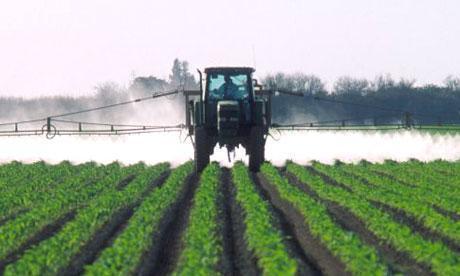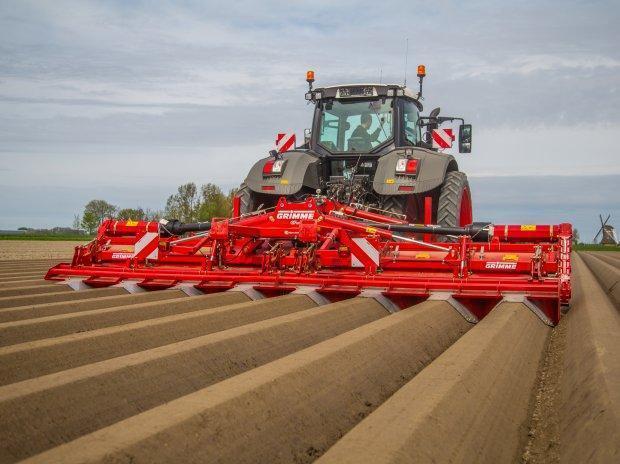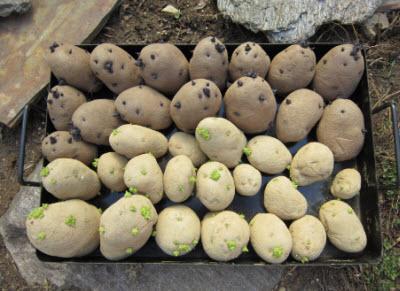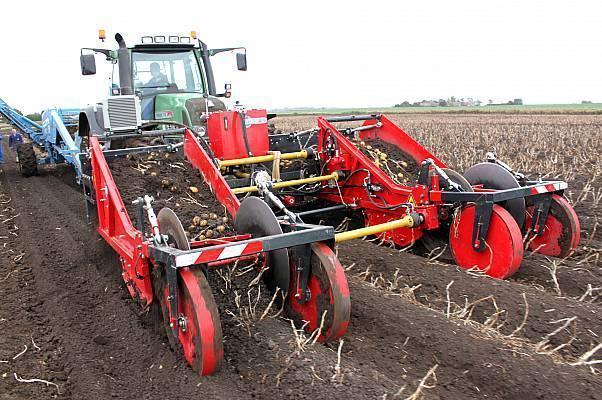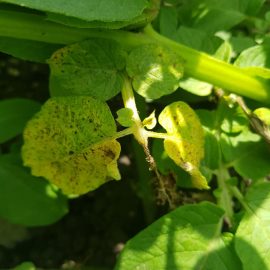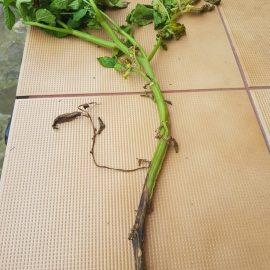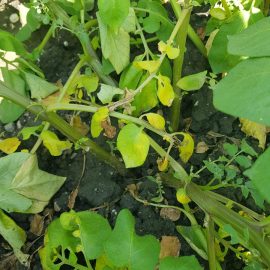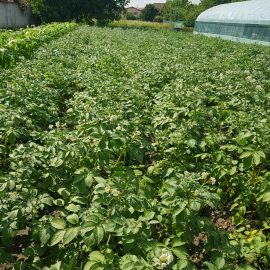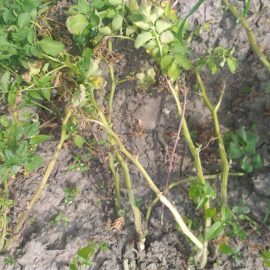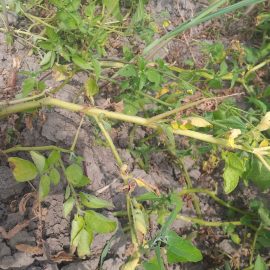Potato, information about crop management
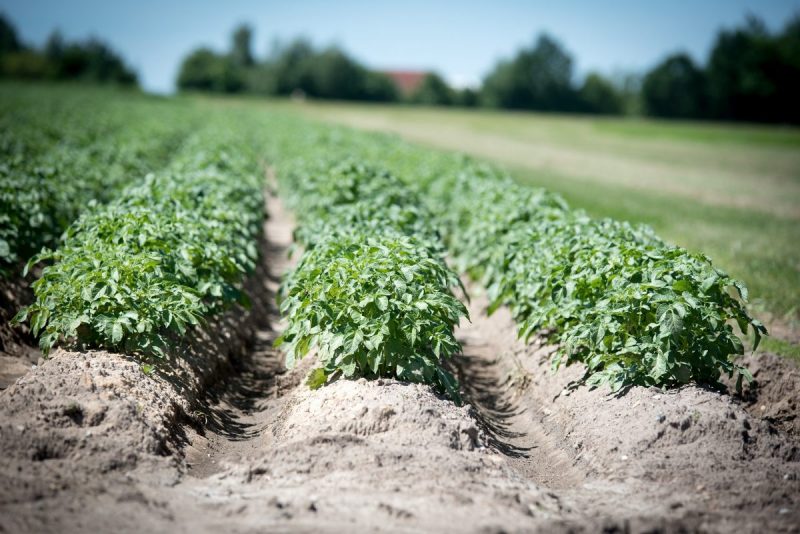
Potato (Solanum tuberosum) It is a staple food in the diet of many people, used in food preparation, in the alcohol industry, in animal feed, or for the manufacture of other derived products.
The potato is an annual plant with fibrous, branched roots, high absorption capacity, and underground stems (stolons and tubers). The stolons are thick, succulent branches of the underground stem and the tubers are organs of the plant in which large quantities of reserve substances accumulate. The leaves are compound, with alternately arranged leaflets of different sizes. The flowers are arranged in inflorescence (cymes), and the corolla comes in a variety of colors (white, violet, blue, pinkish-purple, and yellowish). The fruit is a spherical berry and is not edible.
Climate and soil requirements
Roots begin to grow at 6-7℃, and the optimum temperature for plant growth and tuber formation is 15-18℃. Insufficient light affects the growth of all plant parts, negatively affecting tuber production. Keep the soil moisture at 70 to 80 percent of the field’s water-holding capacity.
Cultivation
Crop rotation
Potatoes should not be grown after other solanaceous plants. A 4-year rotation is recommended, but a 3-year or 2-year rotation can also be used if no nematode attack has been reported. The best preceding crops for potatoes are straw cereals, clover, alfalfa, annual legumes, corn, cabbage, flax, sunflower, roots, or bulbous plants. Monoculture is not recommended for potatoes.
Fertilization
For high yields, potatoes consume large amounts of nutrients. Nitrogen is important for potato production, increasing leaf mass and contributing to a well-developed root system. Phosphorus increases tuber resistance to mechanical damage and storage, and potassium increases starch content and storage resistance. Good results can be obtained by fertilizing with manure or organo-mineral fertilizers. Before sowing, fertilization with NPK complex fertilizer can be carried out, the dose being determined based on soil analysis. In vegetation, it is recommended to apply foliar fertilization with specific fertilizers.
Recommended products
-
You can find products on a different store
Change Store -
You can find products on a different store
Change Store -
You can find products on a different store
Change Store -
You can find products on a different store
Change Store -
You can find products on a different store
Change Store -
You can find products on a different store
Change Store -
You can find products on a different store
Change Store -
You can find products on a different store
Change Store -
You can find products on a different store
Change Store -
You can find products on a different store
Change Store -
You can find products on a different store
Change Store -
You can find products on a different store
Change Store -
You can find products on a different store
Change Store -
You can find products on a different store
Change Store -
You can find products on a different store
Change Store -
You can find products on a different store
Change Store -
You can find products on a different store
Change Store -
You can find products on a different store
Change Store -
You can find products on a different store
Change Store -
You can find products on a different store
Change Store -
You can find products on a different store
Change Store -
You can find products on a different store
Change Store -
You can find products on a different store
Change Store -
You can find products on a different store
Change Store
Soil preparation
After clearing the land, a disc harrow can be used to destroy weeds and plant debris. Plowing should be carried out immediately at a depth of 28-30 cm. In the case of compacted or heavy soils, the soil should be tilled, as soil compaction considerably reduces potato production. After plowing or scarifying, the land must be leveled, which has a positive influence on the quality of subsequent work (planting, ridging, weeding, etc.).
Soil preparation for planting shall be done at a depth of 14-18 cm, followed by ridging in furrows. The ridging helps the soil to warm up more quickly, reduces soil compaction, and eases access to the crop, thus reducing plant damage during cultivation. This work is carried out in several stages. The following work consists of restoring the damaged ridges as a result of maintenance work. Ridging is mandatory for irrigated crops.
Planting material and planting
It is recommended to use healthy planting material, free of diseases and pests. Pathogen-resistant varieties can also be used. The minimum planting temperature for potatoes is 7℃. Calendaristically, the planting season is 5-15 March for early potatoes and 5-25 March for other varieties.
Potato degeneration. It has been found that, regardless of climatic conditions, crop technology, or the variety used, production decreases from one year to another if self-grown planting material is used. Tuber sprouts become weak and the plants become weak, for this reason, it is recommended to use certified material.
Weed control
This work can be done mechanically or chemically. Chemically, with approved herbicides, according to the specifications on the label, depending on the product chosen.
Recommended products
-
You can find products on a different store
Change Store -
You can find products on a different store
Change Store -
You can find products on a different store
Change Store -
You can find products on a different store
Change Store -
You can find products on a different store
Change Store -
You can find products on a different store
Change Store -
You can find products on a different store
Change Store -
You can find products on a different store
Change Store -
You can find products on a different store
Change Store -
You can find products on a different store
Change Store -
You can find products on a different store
Change Store -
You can find products on a different store
Change Store -
You can find products on a different store
Change Store -
You can find products on a different store
Change Store -
You can find products on a different store
Change Store -
You can find products on a different store
Change Store -
You can find products on a different store
Change Store -
You can find products on a different store
Change Store -
You can find products on a different store
Change Store -
You can find products on a different store
Change Store -
You can find products on a different store
Change Store -
You can find products on a different store
Change Store -
You can find products on a different store
Change Store -
You can find products on a different store
Change Store
Pests and diseases
The main diseases that can occur in potato cultivation are downy mildew, rot, and early blight. Among the pests, there are Colorado potato beetle, aphids, and wireworms.
Irrigation
Soil moisture should be maintained at 70-80% throughout the growing season, with 3-12 waterings depending on soil and climatic conditions. The watering norm is 300-500 cubic meters/ha. Drip irrigation can be used for potatoes, as it is the most economical, easy-to-use, plant-friendly, and accessible method.
Harvesting
Extra early potatoes should be harvested when the tubers are over 30 g. Potatoes for processing should be harvested at maturity and those intended for summer consumption should be harvested as needed. Harvesting can be done when the temperature is 10-12℃ to reduce tuber damage. The operation can be done mechanically and in this case, before harvesting, it is recommended to destroy the stems chemically or mechanically. Potato harvesters are very varied in terms of construction, they dislodge the soil containing the tubers, separate the soil and plant debris, and load the tubers into the bunker or transport trailer.
Storage
Storage can be achieved without loss if the tubers have a good phytosanitary condition, and the harvest was done in optimal conditions. Under ideal storage conditions, losses are between 5% and 8.2% for 6 months. The best results were obtained in warehouses with a controlled atmosphere.
Specifically, the following environmental elements must be controlled in the warehouse:
- temperature – for potatoes intended for consumption, this should be between 3 and 8℃, for potatoes intended for planting, the temperature should be between 1 and 3℃;
- air humidity – during the actual storage period, the humidity must be 85-93%;
- ventilation: the air must have 11-13% oxygen and 3% carbon dioxide.














































































































































































































































































































































































































































